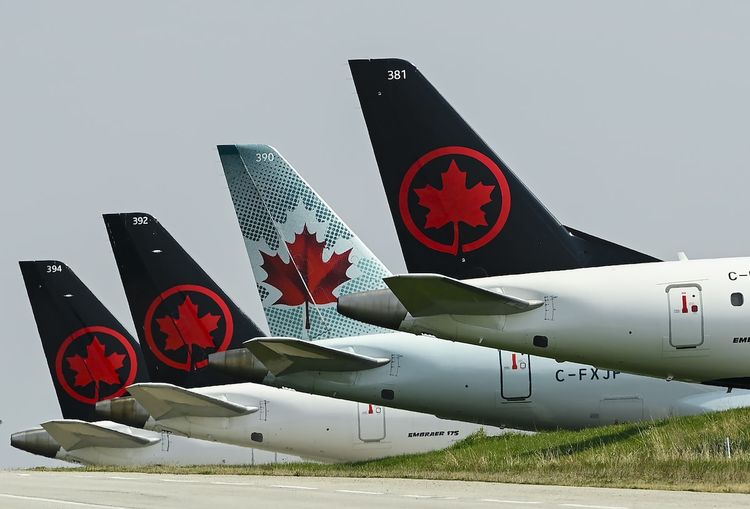Air Canada reports first-quarter loss, expenses up as carrier added ...

Air Canada AC-T slumped to a loss in the first quarter as the country’s largest airline faced higher expenses after it added seat capacity.
For the three months ending on March 31, Montreal-based Air Canada lost $81-million or 22 cents a share, compared with profit of $4-million in the same quarter a year earlier.
Operating revenues rose 7 per cent to $5.2-billion from a year ago, and capacity increased 11 per cent, Air Canada said in an earnings release on Thursday.
Operating expenses climbed by 6 per cent or $311-million, compared with the same quarter of 2023. “The increase was due to higher costs in nearly all line items reflecting higher operated capacity and traffic year over year, in addition to higher labour, maintenance and information technology expense. Lower fuel expense partially offset the increase,” Air Canada said in a statement, released before markets opened.
“Our first-quarter results were solid and largely in line with our internal expectations,” Michael Rousseau, chief executive officer, said on a conference call with analysts on Thursday morning.
Investors reacted to the results by sending down Air Canada’s stock price by 8 per cent to less than $19 in morning trading on the Toronto Stock Exchange.
Before the earnings results, Air Canada shares had risen by 10 per cent this year, outperforming the 4-per-cent increase of the S&P/TSX Composite Index.
Air Canada said on Thursday it plans to continue increasing its capacity, measured as available seat miles, by 7 per cent in the second quarter, compared to last year’s quarter. The airline is also adding leased Boeing 737 Max jets that are expected to be flying next year.
Mr. Rousseau declined to say how many 737s will join the fleet. The addition of the 737s is a “defensive” move to replace some of the six or seven Airbus A220s that are grounded because of problems with the Pratt & Whitney engines. Like other affected airlines, Air Canada is in talks with the engine maker for compensation, he said. The airline has 33 A220s, a narrow-body plane developed as the C Series by Bombardier.
Royal Bank of Canada analyst James McGarragle said Air Canada’s results missed expectations. In a note to clients, he said higher labour costs and maintenance expenses weighed on profit margins. Margins for the quarter were 8.7 per cent; analysts expected 9.9 per cent.
Executives on the call said corporate travel sales were steady but cargo revenue fell by 10 per cent. In response, Air Canada will remove two freighters from its cargo fleet.
Passenger revenue rose by 7 per cent to $4.4-billion, from a year ago. About 30 per cent of this increase was because of strong growth in the transpacific markets of Asia and Australia.
Mark Galardo, Air Canada’s vice-president of network planning, said demand from business travellers to and from the United States was strong in the first quarter, while domestic corporate sales were flat.
Bank of Montreal analyst Fadi Chamoun said sales in most regional markets topped his outlook, with the exception of the Atlantic. Advance ticket sales point to a strong summer, Mr. Chamoun said in a research note. All things considered, Mr. Chamoun described Air Canada’s quarter as “largely in line” with expectations.
Air Canada employs 37,000 people and flies 366 aircraft. In the first quarter, its planes were 84-per-cent full, unchanged from the same quarter of 2023.
The global airline industry saw demand rise by 14 per cent in March, year over year, led by international seat sales, the International Air Transport Association said on Wednesday. Airlines added an average of 12 per cent capacity.
Meanwhile, mediated contract talks continue with the union representing the airline’s 5,000 pilots. The Air Line Pilots Association and Air Canada have been in talks since June. “The process will continue at least for the next little while,” Mr. Rousseau said. “Hopefully, we will come to an agreement as that process winds up.”



























































